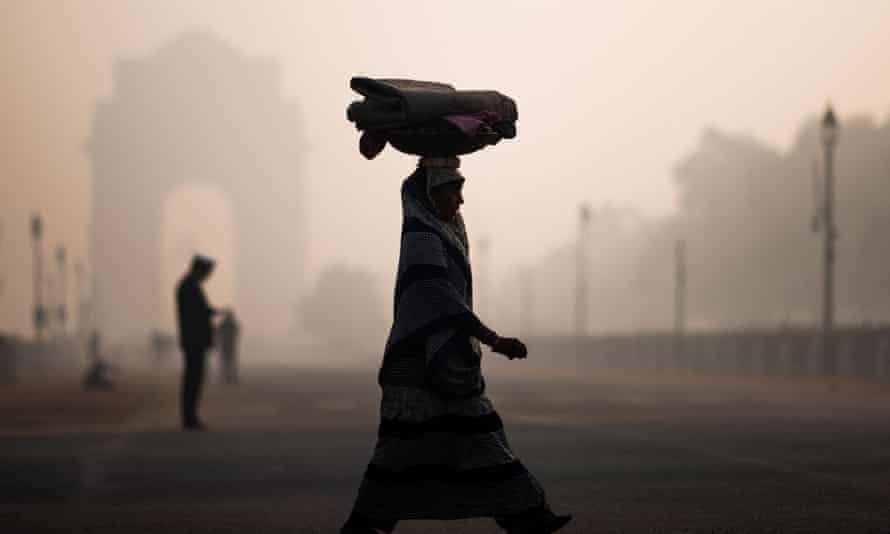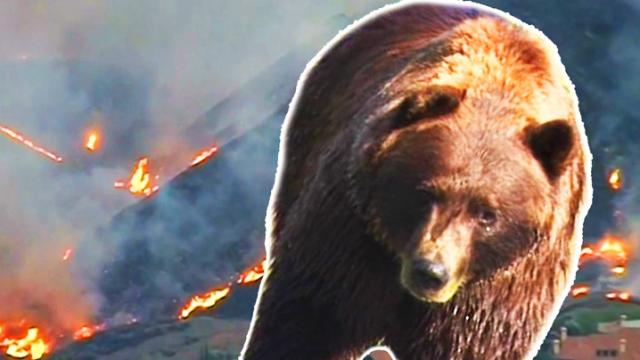Associated Press
Lake Tahoe wildfire seemed controllable, then it wasn’t
SACRAMENTO, Calif. (AP) — Just last week, managers overseeing the fight against the massive wildfire scorching California’s Lake Tahoe region thought they could have it contained by the start of this week.
Instead, the Caldor Fire crested the Sierra Nevada on Monday, forcing the unprecedented evacuation of all 22,000 residents of South Lake Tahoe and tens of thousands of tourists who would otherwise be winding down their summers by the alpine lake straddling the California-Nevada state line.
That drastic move might never have been needed if authorities could have thrown more firefighters at the blaze when it was small. That didn’t happen because the Dixie Fire was simultaneously raging across the mountain range 100 miles (161 kilometers) to the north, on the way to becoming the second-largest wildfire in California history.
“I do think the Dixie and the way that it’s burned and its magnitude did impact the early response to the Caldor,” said Scott Stephens, a professor of wildland fire science at the University of California, Berkeley. “It really drew resources down so much that the Caldor got very few for the first couple days.”
By the time Caldor approached Lake Tahoe two weeks later, there were 4,000 fire personnel, dozens of water-dropping aircraft and hundreds of fire engines and bulldozers.
But all that manpower and equipment were overmatched by tinder dry conditions, whipping downslope winds and an overgrown forest ripe to burn, a half-dozen fire experts said. And with resources already stretched across the West and internationally, they said the long-term situation will only worsen as exhausted firefighters battle bigger blazes that start earlier and last longer.
“Mother Nature is calling the cards on our hubris that we can conquer and control wildfires during these extreme conditions,” said Timothy Ingalsbee, a former federal firefighter who now heads Oregon-based Firefighters United for Safety, Ethics and Ecology, which advocates for working with wildfires instead of reflexively putting them out.
The Caldor Fire ignited from an unknown cause on Aug. 14 in the steep wooded foothills east of California’s capital city of Sacramento. In the first few days, about 240 firefighters were dispatched, compared to the 6,550 firefighters battling the Dixie Fire at the time.
It wasn’t until four days later that Cal Fire Chief Thom Porter said fire managers diverted 30 fire engines from the Dixie Fire to the Caldor Fire. Overnight, the number of engines and firefighters nearly tripled. But by then the fire had already burned through Grizzly Flats, destroying dozens of homes in the town of about 1,200 people.
“We are moving resources around as needed, sharing among the incidents,” Porter told reporters on Aug. 18. But he acknowledged that “we are having a very difficult time” because resources were so stretched across the West.
Officials couldn’t say how many firefighters would have been ideal and when, but Cal Fire was candid that there initially was a shortage, said Ken Pimlott, who retired as the agency’s director in 2018 and lives a few miles from the fire’s origin.
“Early on, this was not the highest priority because there were other threats on other fires that were higher,” Pimlott said.
As the fire marched toward Lake Tahoe and its crystal clear waters that attract visitors from around the world, it destroyed hundreds of homes and other structures and left a firefighter with serious burns.
Still, officials predicted as recently as last weekend that they could hold the fire outside the Lake Tahoe Basin. They feverishly expanded fire lines to take advantage of the barren granite that caps the mountain chain which has formed an impenetrable barrier to flames in the past. This time, their optimism merely lulled residents into a false sense of security, leaving many scrambling to pack their lives in bags when evacuation orders came Monday.
Chad Hanson of the John Muir Project said fire managers were foolish to think they could stop the flames based on the expected winds.
“It is 100% predictable that under those conditions the fire will continue to move in that direction. So it’s hard for me to imagine why anyone would conclude otherwise,” said Hanson, a frequent critic of forest management efforts.
Firefighters had thought they made good progress during favorable conditions going into the weekend, said Jason Hunter, a spokesman for Caldor Fire managers. But then came the changing weather pattern with “incredibly gusty winds” that pushed burning embers over the crest.
“The weather, is what it boils down to, is what changed,” Hunter said. Containment projections are a “constantly moving target” based on evolving conditions, he said. The Caldor Fire’s containment projection has since been pushed back to Sept. 13.
Experts agreed conditions are grim because drought has been worsened by consecutive climate change-driven heat waves that sap humidity before dry winds whip flames and ferry embers sometimes a mile or more ahead of the main blaze.
“These embers are leapfrogging over fire lines and rivers, ridges and roads and other things that typically stop wildfire spread, and so you have these fires kind of hopscotching across the landscape,” Ingalsbee said.
Firefighters were outflanked by a shift in localized winds that funneled flames into the Tahoe basin, said John Battles, a University of California, Berkeley professor of forest ecology.
Fire managers have become adept at projecting the weather and how fuels will burn, but still lack the ability to predict localized winds at fires — some caused by the fires themselves — with 10 different computer models offering as many conflicting outcomes, he said.
“They’re trying to predict winds at a mountain pass. That is the most complex topography we have,” Battles said. “That’s why you have this feeling like they didn’t know what they’re doing.”
He added: “When you’re fighting a fire the size of the Caldor, you make your best guess.”
The Caldor Fire is just the second in modern history to have traversed the Sierra. The first was the Dixie Fire that started in mid-July near the town of Paradise and has grown to 1,300 square miles (3,367 square kilometers), more than four times as large as Caldor.
Such monster fires typically come later in the year when conditions are their driest but also when cooler days, rising humidity and ultimately rain and snow have aided the firefight, said Char Miller, a professor at Pomona College who has written extensively about wildfires.
But California has received far less precipitation than normal the last two years and there’s no guarantee more will arrive this fall to aid firefighters. “This may burn through October,” Miller said.
Yet the fire experts said the biggest challenge is neither drought nor climate change, but the overgrown forests that could actually benefit from fire — so long as it is set or allowed to burn at a low intensity during the spring or fall before it can explode out of control.
Firefighters still quickly contain about 95% of fires, but it’s the ones that escape that do the major damage, Pimlott said. Once fires spread, firefighters may need to start prioritizing communities that can be protected while letting the flames burn around them, he said.
“It’s a hard pill to swallow for all of us in the firefighting community, because we want to put these fires to bed,” he said. “We just may not be able to do that on every one of these fires, because of the conditions we’re facing.”



























